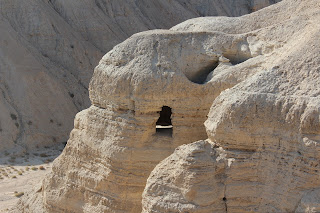 The river Jordan. First off, we are in the middle of the desert. And I mean desert. I can only imagine how refreshing the sight of the banks of the Jordan River was. And then to get there and not be concerned about cleaning off the sweat and dirt, but to want only to wash away your sins and be made clean - that's just a-whole-nother level of being refreshed.
The river Jordan. First off, we are in the middle of the desert. And I mean desert. I can only imagine how refreshing the sight of the banks of the Jordan River was. And then to get there and not be concerned about cleaning off the sweat and dirt, but to want only to wash away your sins and be made clean - that's just a-whole-nother level of being refreshed.We Methodists don't spend as much time thinking and talking bout baptism as some of our other Christian brothers and sisters. Or our Jewish brothers and sisters for that matter. When we baptize infants we are recognizing the gift of salvation and the covenant of God and to each other. It's hard for me to imagine the sins a 3 month old baby could need to have forgiven. But the continual covenant to be raised in the church and confirmed and strengthened in the way that leads to life eternal - that's a grace I'm comfortable with. And unbelievably grateful for.
 But baptism is about being cleansed and made new. After baptism your sins are no more. Your life will never be the same.
But baptism is about being cleansed and made new. After baptism your sins are no more. Your life will never be the same.And so today we stood by the shores of the river and remembered our baptism and are thankful. Grace flowed over our hands and feet and we are made new again.
Click here to watch the devotional video.
We traveled into the West Bank and passed security check points to travel to Jericho. It is believed to be one of the oldest inhabited cities in the world, with remains dating back over 10,000 years. From Jericho you can see the mount Nebo in the distance where Moses was shown the promised land by God but now allowed in. (Deuteronomy 34)
Next, we visited a 2,200 year old sycamore tree celebrated as the one from Luke 19, that Zacchaeus used to see Jesus. "So he ran ahead and climbed a sycamore-fig tree to see him, since Jesus was coming that way."
We journeyed down to the Dead Sea, the lowest spot on Earth, to where the Dead Sea Scrolls were excavated. The Scrolls contained 972 texts discovered between 1946 and 1956 that consist of biblical manuscripts from what is now known as the Hebrew Bible and other documents.
















